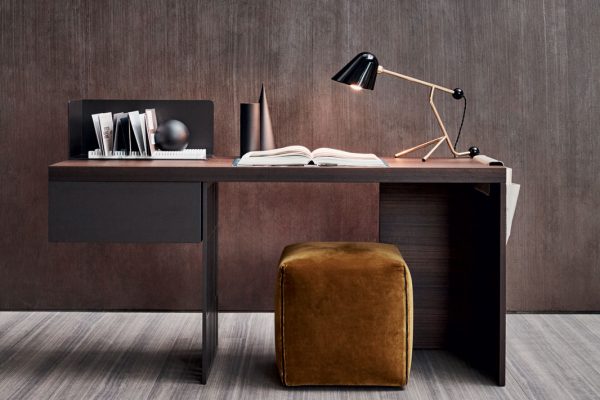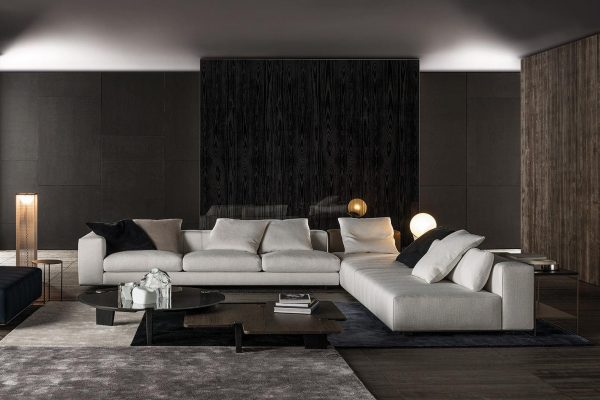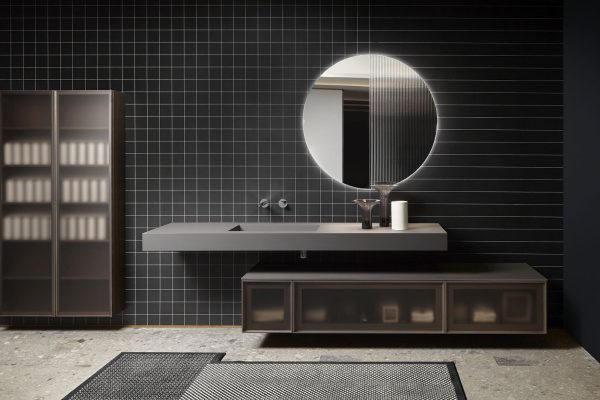Cassina and the modern’s sense of time
In 1927 Le Corbusier had already declared, “The house is a machine for dwelling.” The idea was clear, but no one yet knew quite how to apply it to architectural design, nor had anyone figured out how to experience the machine (i.e., the house) in everyday life from a practical point of view. So the car was the symbol of modern times, but how do we furnish modernity?
The answer comes from the collaboration of Swiss architect and cousin Pierre Jeanneret with Charlotte Perriand. The young designer had just enjoyed great success at the Paris Fall Salon with her “bar under the roof,” an installation made of copper and aluminum furniture and capable of translating the spirit of the machine into a room.
The objects made by these three pioneers of the modern are animated by new aesthetic values and find continuous design challenges in the domestic experience, giving rise to a different sensibility toward contemporary everyday life.
CUTTING-EDGE SEATING: LC2 AND LC3
The LC collection, made beginning in 1928 and first presented at the Paris Autumn Salon in 1929, represents Le Corbusier’s studio’s first foray into the world of interior design. The pieces, originally conceived for the projects of Maison La Roche in Paris and the Pavilion for Barbara and Henry Church, are a modernist response to traditional armchairs.
The LC2 armchair, together with the LC3 sofa, is a timeless model that has made, and continues to make, design history. Le Corbusier sketched seating designs from the study of the positions of the human body, so as to respond with maximum comfort to those positions and indulge the formal design to the functional requirement. The model of the LC2 was later defined by the efforts of Le Corbusier, Pierre Jeanneret and Charlotte Perriand and at the time was called “Fauteuil Grand Confort, petit modèle.” It was first produced by Thonet, while a second edition was launched in 1959 by Heidi Weber, a gallery owner in Zurich, under the name LC (Le Corbusier, precisely). Since 1964 the collection has been produced by Cassina.
The LC2 and LC3 models, ironically called “cushion baskets” by their creators, feature the inversion of the classic sofa structure, with the metal supports carried outside the cushions gently lifting the seat off the floor. In order to support the entire structure, the frame is composed of flat and tubular pieces of high-quality steel welded together, and coated with a layer of protective chrome plating.
The comfort of an upholstered sofa is combined here with the industrial aesthetics of international style in a design product that is still undeniably relevant today.
THE PURE ESSENTIALITY OF LC5
LC5 is a design created for the Paris apartment of Le Corbusier and his wife Yvonne at 24 rue Nungesseret-Coli and was reissued by Cassina in 1974. After an in-depth analysis of archival documentation carried out in collaboration with the Fondation Le Corbusier, Cassina reintroduced it with new finishes and more comfortable proportions than its first edition. The overall comfort and structural integrity of the LC5 sofa has been maintained in keeping with its immediately recognizable form.
This is a two- or three-seater armless sofa with a polished chrome-plated steel frame or painted in gray, light blue, green, mud, ivory and black semi-gloss colors. The cushions feature polyurethane foam insert padding and leather or fabric upholstery. The backrest reaches up to the base frame, and the wide cushions provide extremely comfortable seating.
Its minimalist appearance is the epitome of modern aesthetics and finds timeless value in its simplicity.
REFOLO: BETWEEN TRADITION AND MODERNITY
“The Eiffel Tower could never have been built of wood.” Yet, after researching the use of chrome-plated steel for seating frames, Perriand shows her ability to appreciate the traditional materials of the places she inhabits-from Provençal woods to Japanese bamboo.
Refolo is a modular system with simple, essential volumes, created by Charlotte Perriand for her home in Tokyo in 1953. The design of the seat, which is equally usable as a bench, coffee table, or, with the addition of upholstered cushions, as a sofa, finds obvious inspiration in Japanese materials and functional aesthetics. Positioned at an ideal height for a variety of possible uses, the horizontal top is composed of nineteen parallel strips of wood in natural or dark-stained oak, supported by two or three legs. The cushion system consisting of upholstered backrest, seat and armrests is integrated with the utmost simplicity and harmony to the structure by means of an anchoring device that allows their free and flexible arrangement. Ideal for the living or relaxation area, Refolo lends itself to a variety of configurations to provide maximum comfort and encourage conversation.
Contemporaneity and research are the striking features of Refolo, one of Charlotte Perriand’s first products that Cassina reissued 2004 and now part of the “Cassina I Maestri” collection.



